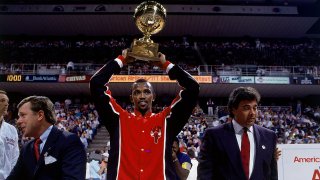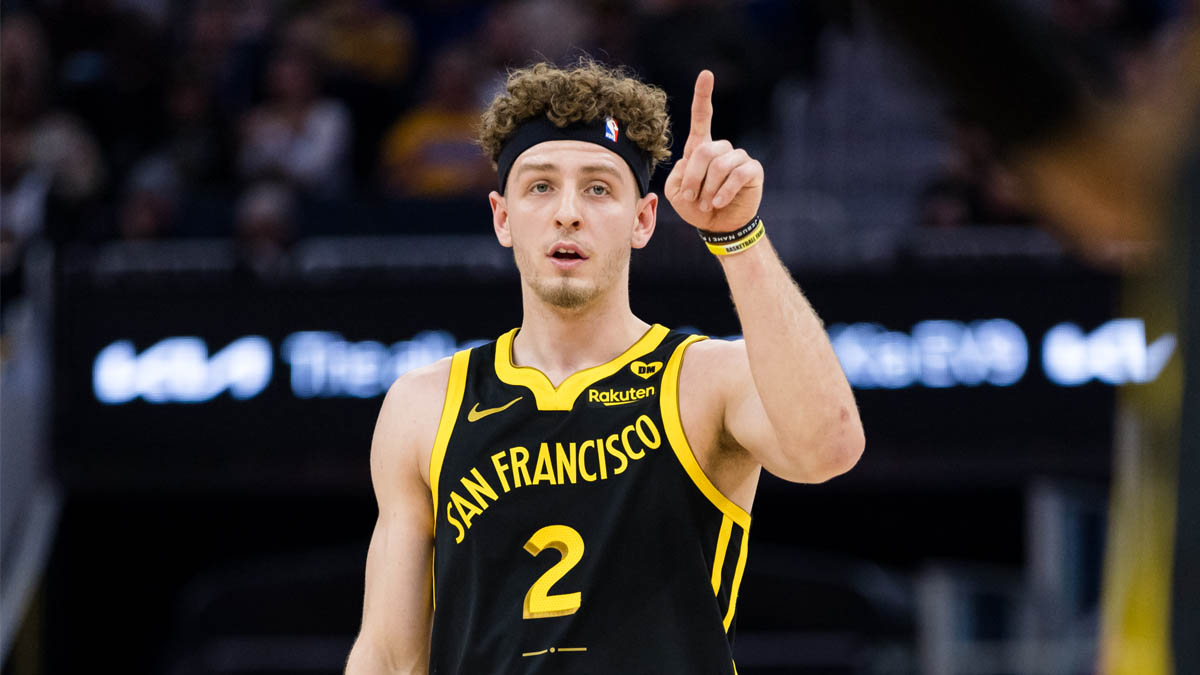
History delivers certain truths about basketball, one being that shooters are the last to fade. Dell Curry, now known as the father of Stephen and Seth, was getting NBA minutes at 37, Ray Allen and Reggie Miller at 38, Dale Ellis at 39.
Craig Hodges, elite shooter, was done at 31.
What happened? The Chicago Bulls guard got political. Too political for the NBA in the 1990s.
Stay in the game with the latest updates on your beloved Bay Area and California sports teams! Sign up here for our All Access Daily newsletter.
The same NBA that 30 years later has its commissioner and governors sitting with players and coaches to address racial injustice. The same NBA that now uses a megaphone to encourage its franchises to take action as proof its commitment to equality.
When the Bulls, behind Michael Jordan, won the 1991 NBA Finals and were invited to the White House to visit President George H.W. Bush, Hodges wanted to bring more than his smile. Rather the customary suit and tie, he chose traditional African garb. He also wished to solicit executive assistance in addressing Chicago’s steep murder rate.
“When we won, I had a chance to go to the White House and I presented a letter to President Bush and asked him to consider our issues like he considered foreign policy,” Hodges recalled in a conversation this week. “And for whatever reason, (after that) I was considered a persona non grata as far as the league was concerned.
“I won two world championships and won three consecutive 3-point titles at the time. I wasn’t able to continue my career in the NBA.”
Golden State Warriors
Check the book. Hodges won the All-Star Weekend 3-point shooting contest in 1990, ’91 and ’92. He is the last three-time champ, joining Larry Bird as the only players to accomplish that feat. Hodges was a member of Bulls championship teams in ’91 and ’92.
Yet he took his last shot on June 10, 1992, in Game 4 of the Finals against the Portland Trail Blazers. It went in. Exactly one month later, he was waived. He wasn’t told why. Maybe he had an idea.
“I was taught I can stand and speak on what I believe,” Hodges said. “And I didn’t think that after having won two championships and three consecutive (3-point) titles that no one would pick me up.”
Hodges stood by his principles and paid a price within what was considered, even then, the most progressive of American major sports leagues. The NBA that wanted no part of him after 1992. The league also marginalized another shooter with personal principles, Mahmoud Abdul-Rauf, after 1997. By 2001, Abdul-Rauf was a total outcast.
The NBA of the 1990s, with the late David Stern as commissioner, was rising in popularity in the wake of drug issues that plagued it in the ‘80s. Magic Johnson and Bird were aging, but Jordan had arrived and was ready to eclipse them both. Attendance was up. TV contracts were more lucrative. The league was going global.
The fear was that any sign of political dissent, racial awakening or social unrest would be damaging, perhaps irreparably. The NBA and its superstars were unwilling to let anyone, particularly a role-playing specialist like Hodges, jeopardize its ascent.
“To this day it’s still one of those things that, when they talk about how woke the NBA is, I feel like there’s a certain amount of truth and reconciliation about what goes on in America today,” Hodges said. “And it has to happen on all levels and all industries, and the NBA is no different.”
Hodges, 60, speaks with more resignation than bitterness. He is disappointed, to say the least, that his contributions went unrecognized and his presence was utterly invisible during ESPN’s widely viewed “Last Dance,” which chronicled the rise of Jordan and the Bulls.
RELATED: Warriors’ five best trade assets going into vital offseason
Hodges realizes where the NBA stood on racial and political matters 30 years ago -- or 19 years ago, when Abdul-Rauf’s career ended a month after he turned 32. It was a lot like today’s NFL, which has spent the last four years locking its doors in the face of Colin Kaepernick. All three are members of a select club of athletes confronting inequality.
“That’s the beautiful part of being in that fabric, being in the fabric knowing that you’re part of an ancient timeline,” Hodges said. “An ancient timeline that the truth is the truth, like 1-2-3. So, you can’t put no twist to it. And you don’t have to uphold it other than just tell what it is.
“That’s what we did man, we saw things the way we saw them through the lens of people who wouldn’t get a chance to say it or bring it to the forefront. That’s our duty. It’s the Good Samaritan. The Good Samaritan principle is what my granny taught me. If you can do what you can, do what you can. Don’t worry about it.”


